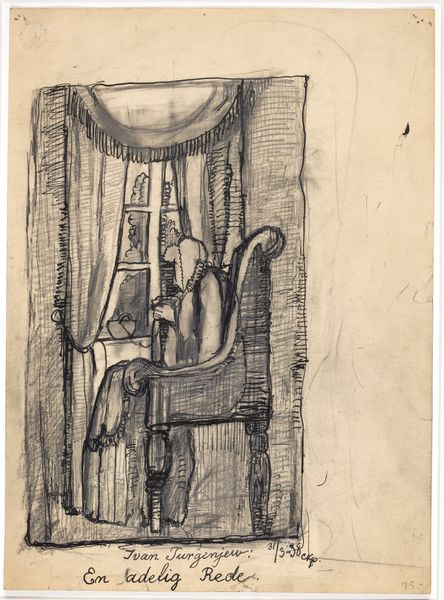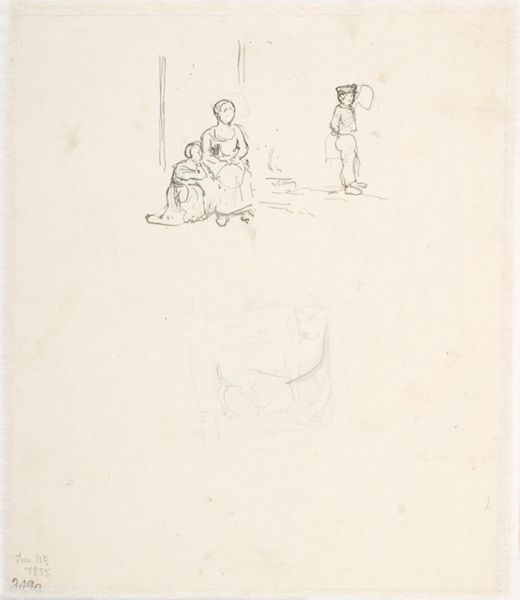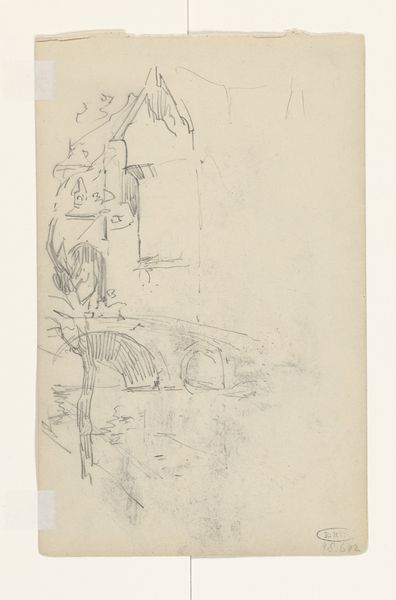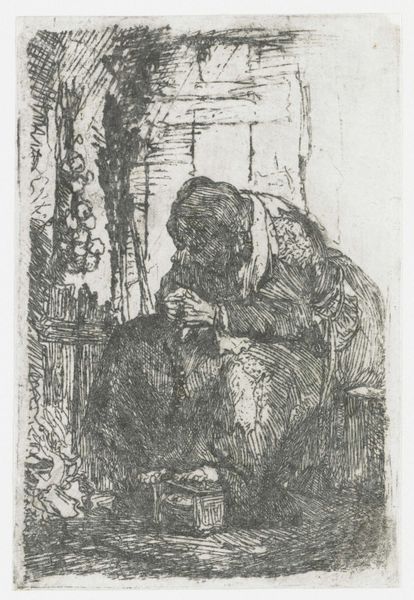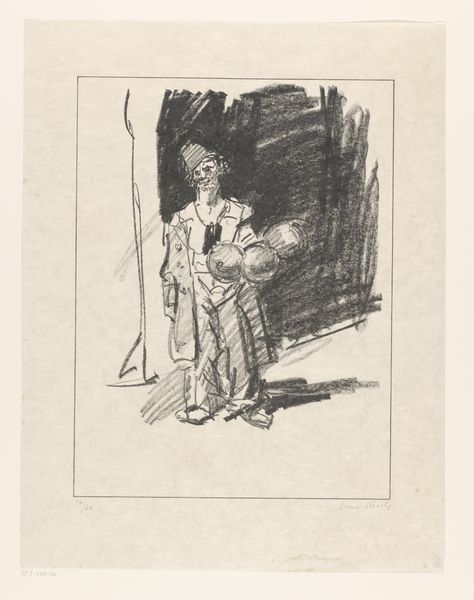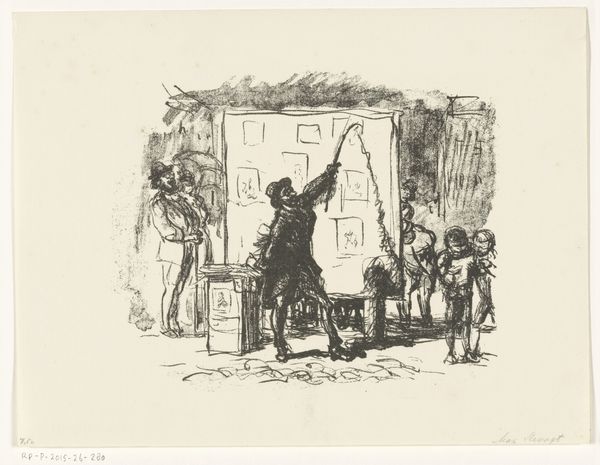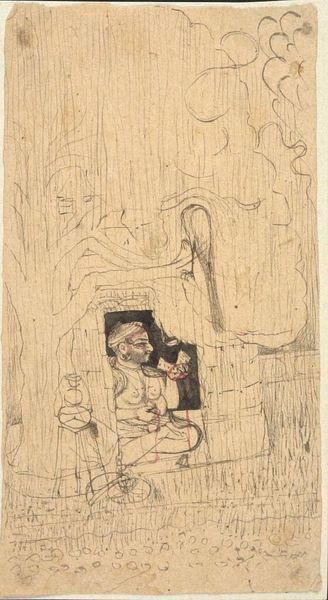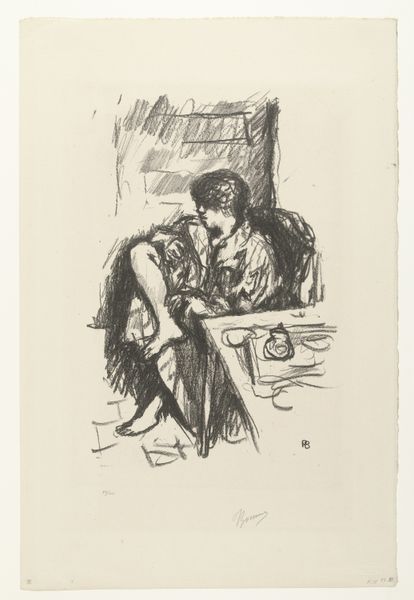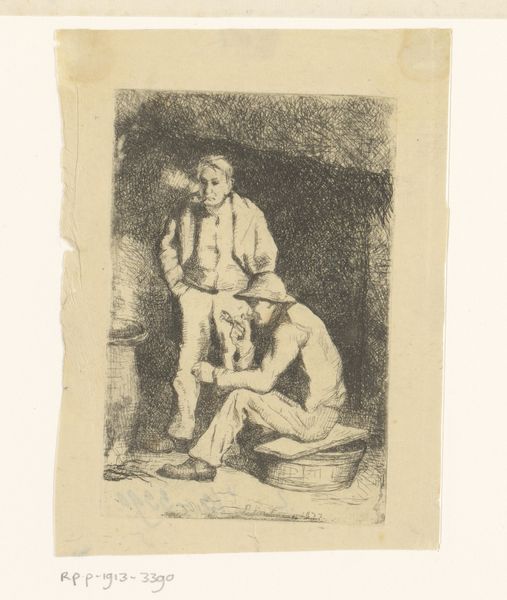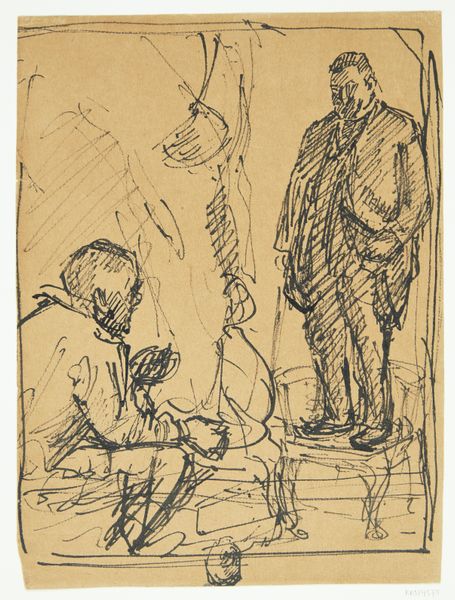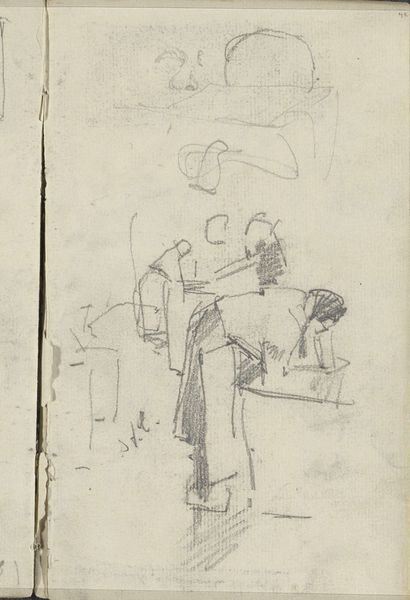
drawing, paper, ink
#
portrait
#
drawing
#
paper
#
ink
#
genre-painting
#
modernism
#
realism
Dimensions: height 235 mm, width 195 mm
Copyright: Rijks Museum: Open Domain
Editor: Jozef Israëls created this poignant drawing, "Als men oud wordt," sometime between 1834 and 1911. It’s rendered in ink on paper, and it feels quite melancholic. I’m struck by the lone figure, hunched in a chair surrounded by these rather antiquated clocks. What can you tell me about its broader context? Curator: It's a very evocative piece. Considering Israëls’ era, the late 19th century, we need to consider the social climate. Industrialization was changing the very fabric of society, and with it, the traditional views on aging and labor. Genre paintings at the time often romanticized or sentimentalized these themes, influencing how aging and memory were depicted in public and artistic discourse. Do you think Israëls conforms to that expectation or offers something different? Editor: Well, I initially saw the clocks as symbolizing the relentless march of time, pressing down on the elderly figure. However, thinking about what you said about industrialization, the clocks also evoke ideas about factory schedules, an older, less hurried temporality replaced by this mechanized, industrialized time. Curator: Precisely! It also ties to a much wider dialogue on what it meant to be ‘productive’ in a rapidly changing economy. Israëls, positioning this character with such emphasis in the domestic sphere, invites a contemplation on labor, value, and the shifting definition of ‘work’. It brings a political charge. What's his relationship to these timekeeping devices, and by extension, this accelerated era? It questions whose interests are really served in modernism. Editor: So, the work challenges idealized depictions of aging. What about the museum, exhibiting a piece about getting old in such a central location? It seems that we’re supposed to find a personal connection to the piece, too. Curator: Absolutely, exhibiting it invites introspection. Institutions like the Rijksmuseum often use these kinds of genre paintings to present national narratives and ideals. They remind viewers about the past and ask to reflect on national progress while still remembering the forgotten or less visible members of the public. Editor: This has provided me a great deal to reflect on concerning its significance! Thanks so much! Curator: My pleasure! It's a powerful reminder of the stories art can tell about social and political shifts, even when seemingly focused on a personal moment.
Comments
No comments
Be the first to comment and join the conversation on the ultimate creative platform.
